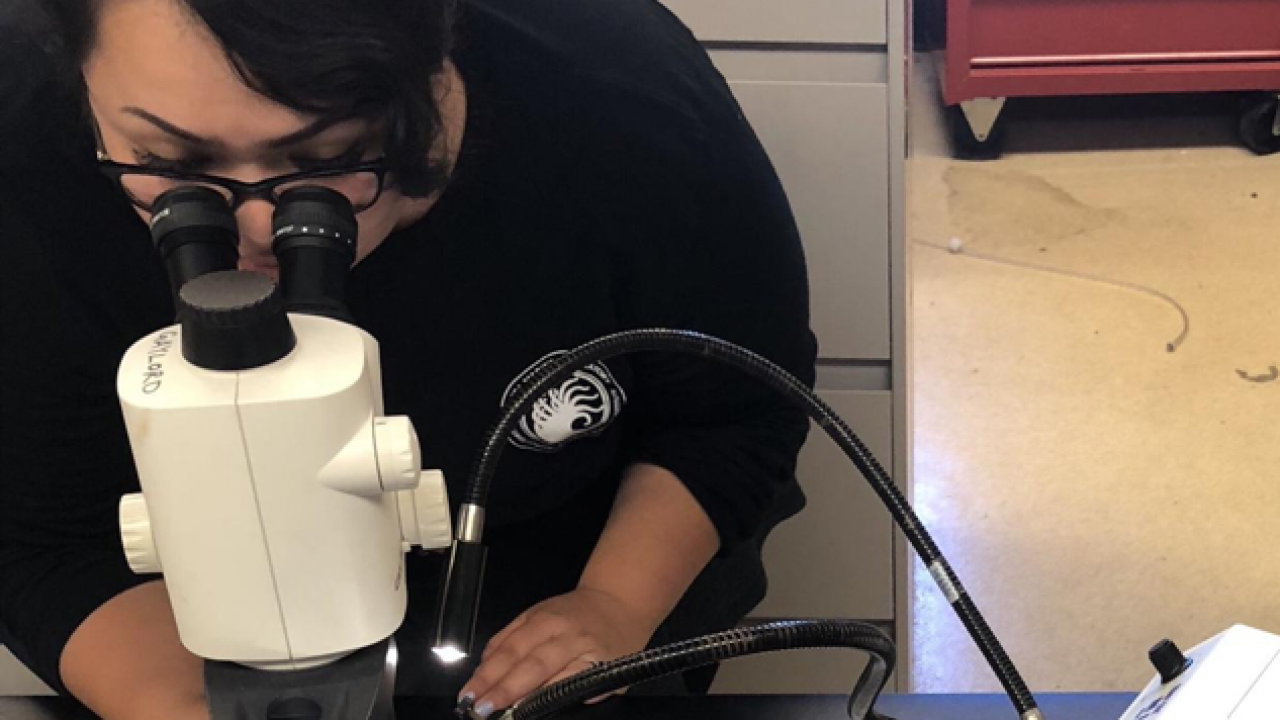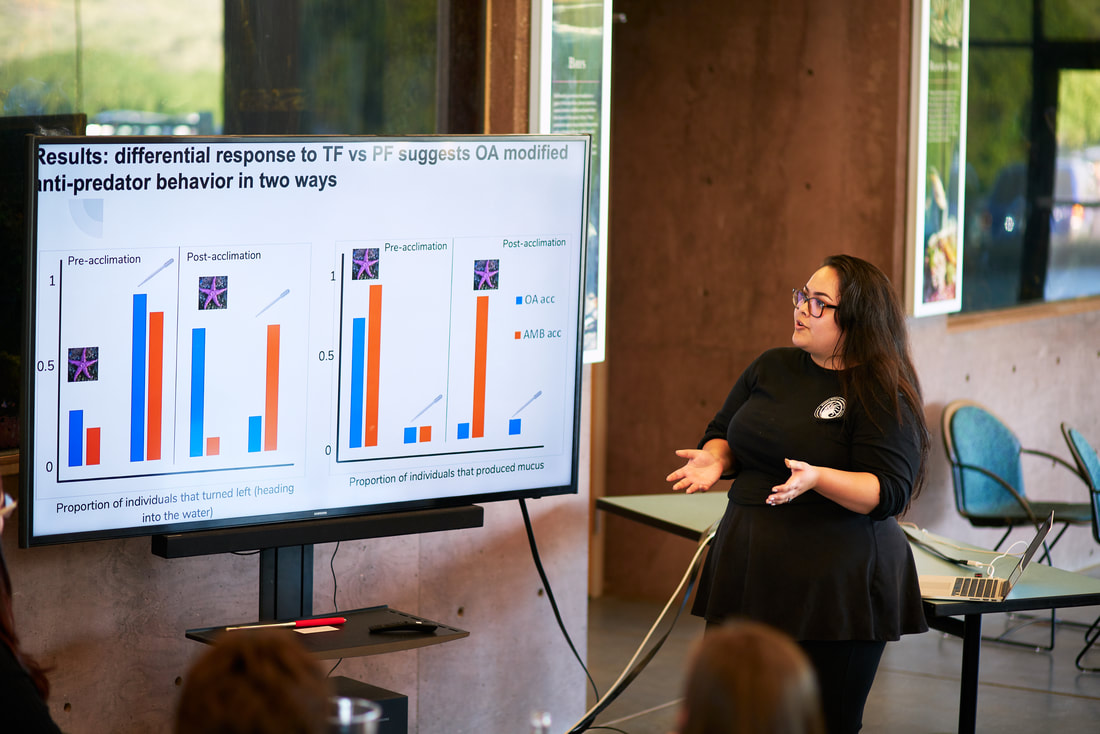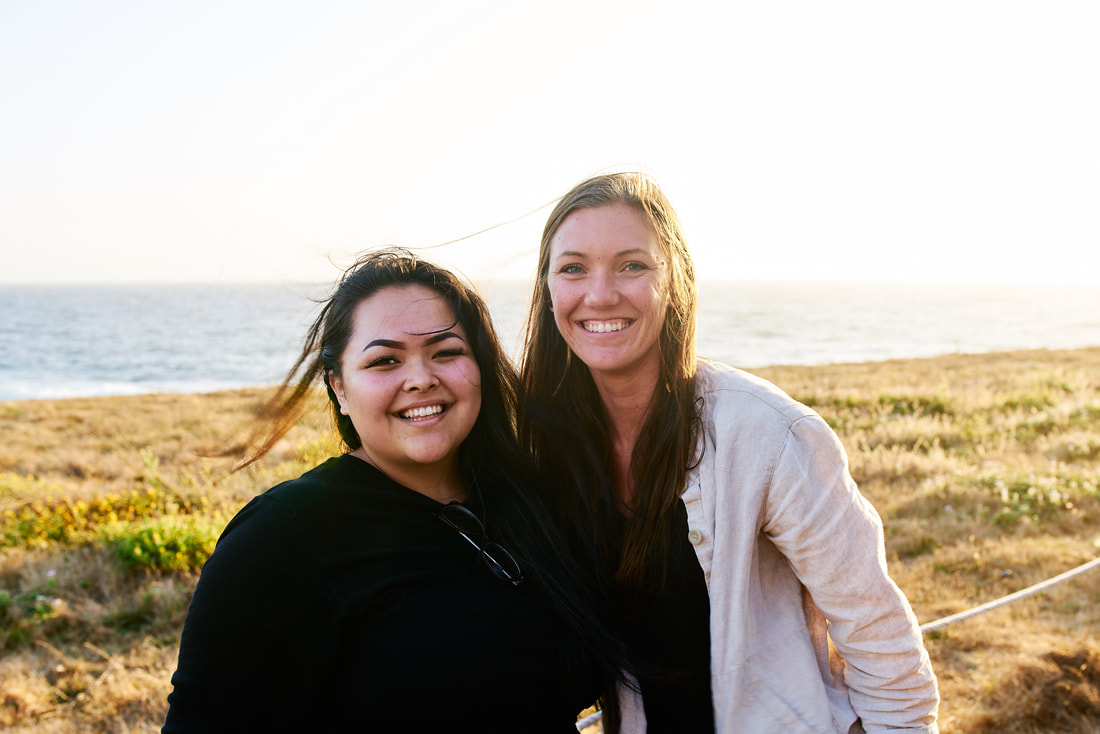
A Summer by the Bay
Lena Ballard was an intern in the 2019 SRJC-BML Summer Internship Program. She worked with Alisha Saley. Lena has now transferred to Dominican University of California.
My summer project consisted of semi-independent research work observing and documenting various anti-predator responses of prey species Lottia pelta, the shield limpet, to the dominant predatory ochre sea star, Pisaster ochraceus. Changes resulting from to OA, a chemical perturbation due to increased anthropogenic CO2 in the atmosphere, have the ability to alter predator-prey dynamics, such that the checks and balances within the intertidal ecosystem disrupt the overall community. Thus, I asked how select documented anti-predator responses may fair under future ocean conditions and whether or not ocean acidification (OA) disrupts this specific predator-prey interaction, potentially increasing predation risk to a crucial intertidal grazer (limpet).

Q: What have been some of the highlights and biggest learning experiences from your summer at BML?
Out of all of the priceless memories and lessons learned from my time at the lab, my favorites were with my mentor, Alisha. Yes, we always found highlights while spending peaceful mornings submerged shin-deep in tide pools observing, identifying and collecting my study species, Lottia pelta (the shield limpet). Even the common rogue wave splashing in and down our ripped boots and soaked tennis shoes didn’t dampen the excitement of exploring a new semi-submerged world. Although these “sunny” memories taught me a lot about the rocky intertidal ecosystem, the most impactful experience occurred on a much “foggier” occasion.
It was the middle of the summer, about 3 weeks into my 10 week internship at the lab. Thus far, I had tried multiple pilot projects aimed at documenting the diverse anti-predator responses of L. pelta to chemical cue from Pisaster ochraceus, the ochre sea star, and found weak hints of similarities among individuals. Then one day I observed that when exposed to sea star cue in groups, individuals tend to aggregate together in colonies. It was my first true ah ha moment that I felt warranted further exploration; “I can’t wait to share my findings with Alisha”, I thought. After constructing an experiment I began running trials to test my hypothesis and was very hopeful. However, by the end of the first day of trials it was unclear whether or not the aggregation response I had once confidently observed was just a coincidence in their movement behavior. I was devastated; had I just failed? Therefore, I immediately went through my methods, observations, and literature searching for where I had gone astray. I knew there must have been somewhere I made a mistake and I just couldn’t figure out where. I felt like a failure.

This low point took a turn when I expressed my disappointment to my mentor and she reassured me that I had done nothing wrong- sometimes things just don’t turn out the way we expected and it doesn’t have anything to do with us; it is just scientific process and that is why we replicate our observations--to increase confidence in whatever we observe over multiple trials. It turns out that it shouldn’t be considered failure when we observe trends that don’t support our hypothesis because the knowledge and experience gained are still valuable and worthwhile. Developing my observational abilities, being able to formulate a hypothesis, constructing an experiment, efficiently conducting literature searches- all of these skills, whether or not I was able to “fail to reject my null hypothesis”, will continue to aid in what comes next.
So instead of continuing to scrutinize myself, I got back to work. I was encouraged to sit back and think about the pilot for a few days. Had the limpets done something else when touched with a sea star tube foot? How could these responses be ecologically relevant for their survival in the intertidal? It wasn’t long after I had a new pilot. Akin to exploring in the intertidal, just because an unexpected wave soaks you from head to toe doesn’t mean you’ve failed. You just have to be patient for the wave to subside, look around to find a new path, and remember what has happened to be prepared for the next one.
In summary, this experience taught me something that I will hold onto for a lifetime. You aren’t defined by “failure”- what defines you is how you deal with it. With any obstacle you must embrace the lesson learned and possess unwavering tenacity.
